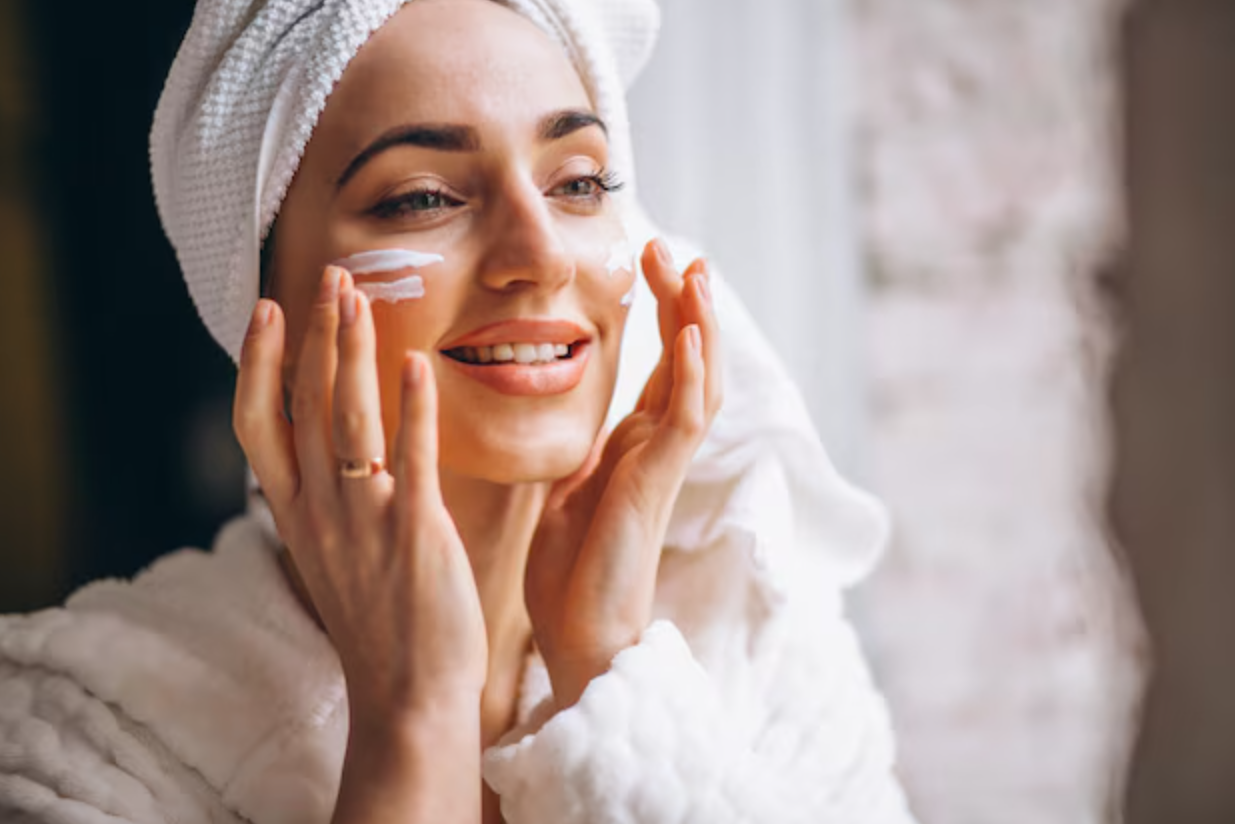Fish guts could be the future of skin care products
Explore how marine bacteria-derived compounds could revolutionize anti-aging and skin-brightening skincare products.

Marine bacteria may soon transform skincare, offering a surprising twist to cosmetic science. (CREDIT: CC BY-SA 4.0)
Marine bacteria may soon transform skincare, offering a surprising twist to cosmetic science. Researchers recently studied Ruegeria atlantica and Pseudoalteromonas neustonica, gut bacteria of red seabream and blackhead seabream, to uncover compounds with anti-aging and skin-brightening properties. These fish, found in the Pacific Ocean, harbor microbes that had largely remained unexplored until this study.
The study isolated 22 chemical compounds from the bacteria, with 16 derived from Ruegeria atlantica and six from Pseudoalteromonas neustonica. These compounds were analyzed using advanced spectroscopic techniques, revealing structures with potential applications in cosmetics. Among them, several stood out for their effects on enzymes linked to skin health: tyrosinase, responsible for melanin production, and collagenase, which degrades collagen.
Collagenase contributes to wrinkle formation as it breaks down collagen, the protein that gives skin its firmness and elasticity. Compounds 11 and 13 showed significant collagenase inhibition at levels comparable to or better than epigallocatechin gallate (EGCG), a known anti-aging agent.
Tyrosinase, on the other hand, regulates melanin production. Compounds 11 and 14 exhibited moderate tyrosinase inhibition, suggesting potential as skin-brightening agents.
Importantly, compound 11, cyclo(l-Pro-d-Leu), demonstrated notable stability under heat and UV exposure, maintaining its effectiveness for six days. This resilience makes it an excellent candidate for cosmetics designed to combat aging and pigmentation.
Natural products have historically driven drug discovery, with nearly half of FDA-approved drugs between 1981 and 2019 derived from natural sources. The success of compounds like Marizomib, an anticancer agent from marine bacteria, underscores the pharmaceutical potential of oceanic microorganisms. Researchers believe that untapped microbial metabolites could yield groundbreaking cosmetic and therapeutic innovations.
In this study, published in the journal, ACS Omega, tyrosinase and collagenase activity were targeted for their relevance to skincare. Tyrosinase plays a pivotal role in melanin synthesis, starting with the hydroxylation of l-tyrosine to produce l-DOPA, which then undergoes oxidation to form l-dopaquinone.
The resultant compound undergoes further transformations to produce eumelanin. Excess melanin can lead to hyperpigmentation, often associated with aging or sun damage. Thus, inhibiting tyrosinase activity is crucial for developing skin-brightening products.
While compounds like kojic acid and arbutin have been used in cosmetics to inhibit tyrosinase, safety concerns linger, especially with hydroquinone, which has been banned for cosmetic use since 2001. The newly discovered bacterial compounds offer safer, naturally derived alternatives. Their ability to target tyrosinase without causing adverse effects could revolutionize skincare formulations.
Related Stories
Collagen breakdown, a natural aging process, accelerates due to environmental factors like UV radiation. Collagenase enzymes exacerbate this process, leading to sagging and wrinkles. Anti-collagenase compounds can slow this degradation, promoting skin firmness.
Compounds 11 and 13’s strong inhibition of collagenase highlights their potential as anti-aging agents. Their performance rivals established compounds, opening doors for their integration into skincare products.
Interestingly, none of the tested compounds exhibited significant antibacterial activity, even at concentrations up to 100 µM. While this limits their applications in antibacterial treatments, it ensures that their primary effects target skin health without unintended antimicrobial interference.
The concept of finding cosmetic ingredients in unconventional sources isn’t new. Snail mucin, for example, has become a popular moisturizing agent.
However, fish gut bacteria take this idea further, illustrating how biodiversity can inspire innovations in unexpected ways. Just as penicillin emerged from moldy experiments and Marizomib from marine sediments, these bacterial metabolites reveal nature’s untapped potential.
The enzymes tyrosinase and collagenase represent key targets for developing cosmeceuticals. Tyrosinase’s role in pigmentation makes it central to addressing hyperpigmentation disorders. Collagenase, by breaking down skin’s structural proteins, contributes to visible signs of aging. The dual inhibitory effects observed in these compounds could herald a new era in skincare solutions.
By focusing on enzymes crucial to skin health, researchers demonstrated the potential for marine-derived compounds in functional cosmetics. These findings align with a growing trend of harnessing natural, sustainable resources for skincare. The isolation of stable, effective inhibitors represents a significant step forward, particularly for an industry seeking innovative, eco-friendly alternatives.
Marine ecosystems—especially those that host fish like red and blackhead seabream—remain largely unexplored in the quest for therapeutic and cosmetic ingredients. With nearly 98% of metabolites from living organisms still unidentified, the ocean’s biodiversity could hold answers to numerous scientific challenges.
For example, marine-derived compounds have already shown promise in cancer treatment, with salinosporamide A undergoing clinical trials. This study’s success reaffirms the importance of such exploratory research.
The application of these compounds goes beyond laboratory discoveries. For instance, cyclo(l-Pro-d-Leu)’s stability under stress conditions suggests it could thrive in real-world cosmetic formulations.
Heat and UV stability are critical factors, especially for products exposed to diverse environments. Its dual functionality in inhibiting tyrosinase and collagenase positions it as a multifaceted ingredient, addressing both pigmentation and aging.
Beyond cosmetics, this research opens avenues for sustainable biotechnological applications. Marine bacteria can be cultivated without depleting natural resources, offering a renewable source of bioactive compounds. This aligns with global efforts to create environmentally friendly solutions across industries.
By integrating such compounds into consumer products, researchers bridge the gap between cutting-edge science and everyday use.
The discovery process also highlights interdisciplinary collaboration, combining microbiology, chemistry, and dermatology. Such teamwork underscores the complexities of translating natural discoveries into practical applications. Moving forward, clinical trials and formulation tests will be essential steps in validating these compounds’ effectiveness and safety for human use.
Ultimately, this research highlights the untapped potential of marine bacteria. By exploring the metabolites of Ruegeria atlantica and Pseudoalteromonas neustonica, scientists unveiled promising compounds for combating wrinkles and uneven skin tone.
The next step involves clinical testing and formulation development, which could bring these compounds from the lab to your skincare routine.
Note: Materials provided above by The Brighter Side of News. Content may be edited for style and length.
Like these kind of feel good stories? Get The Brighter Side of News' newsletter.
Rebecca Shavit
Science & Technology Journalist | Innovation Storyteller
Based in Los Angeles, Rebecca Shavit is a dedicated science and technology journalist who writes for The Brighter Side of News, an online publication committed to highlighting positive and transformative stories from around the world. With a passion for uncovering groundbreaking discoveries and innovations, she brings to light the scientific advancements shaping a better future. Her reporting spans a wide range of topics, from cutting-edge medical breakthroughs and artificial intelligence to green technology and space exploration. With a keen ability to translate complex concepts into engaging and accessible stories, she makes science and innovation relatable to a broad audience.



